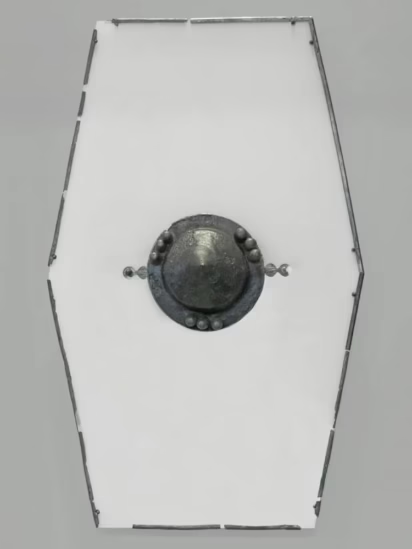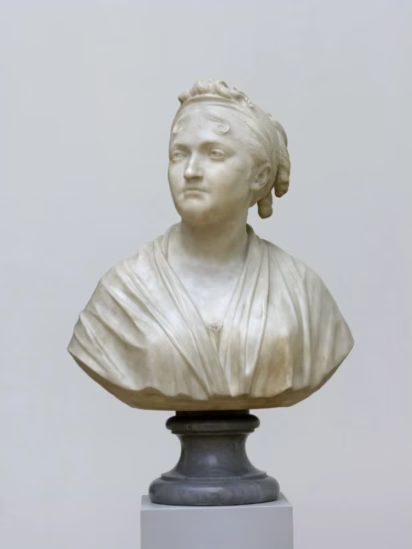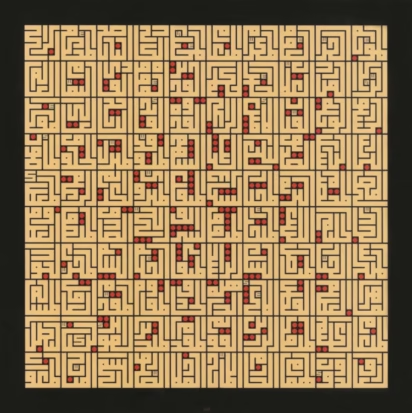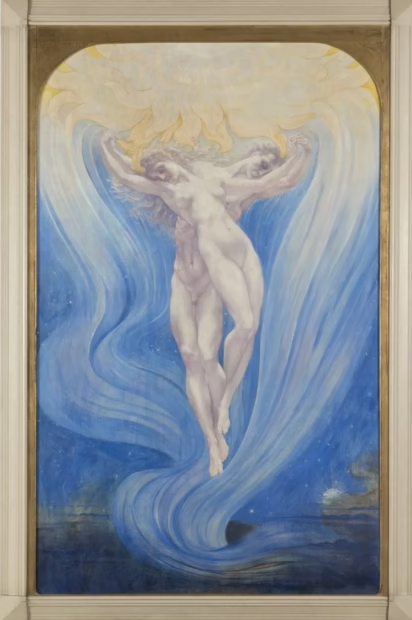A critical look at Germanic tribes is the most-interesting temporary exhibition on Berlin’s Museum Island in 2020, although the opening of the Humboldt Forum will be the cultural highlight of the year.

The opening of the Humboldt Forum with museums from the Asian Art and Ethnological collection is the main cultural event on Berlin’s Museum Island (Museumsinsel) in 2020 — although the building opens 17 December 2020 the best museums and temporary exhibitions will only open in 2021. However, several temporary exhibitions will add further attractions to the already impressive top museums in Berlin Mitte. Several of these temporary exhibitions are highly specialized or focus to a large extent on the museums themselves. However, a critical look at the Germanic tribes will be of major interest to a cross-section of visitors — it will consider the current state of research rather than the traditional approach of contrasting the Germanic tribes to the civilized Roman Empire or to misinterpret history for nationalist propaganda.
Museum Island is home to many of the best museums in Berlin. The Museum Island ticket gets visitors into most for €18 for the day, while the Berlin Museum Pass and Berlin Welcome Car All-Inclusive also cover admission fees.
Special Germanic Tribes Exhibition in the James-Simon-Galerie
The Germanic Tribes. A Critical Look
Germanen. Eine Bestandsaufnahme is a temporary exhibition in the special exhibition space of the James-Simon-Galerie (and in the Neues Museum) by the Museum für Vor- und Frühgeschichte (Pre and Early History) – Staatliche Museen zu Berlin and the LVR-Landesmuseum Bonn.
This exhibition presents recent research on the Germanic tribes and outlines the settlement history of the area on the right bank of the Rhine between the 2nd century BC and the 4th century AD on the basis of numerous new finds and high-ranking loans. The exhibition, whose concept was developed over several years as part of the Topoi Cluster of Excellence, contrasts the public image of the “Germanen” with the current state of research.
This archaeological stocktaking allows a factually well-founded view of an important epoch in history, which is either only viewed in contrast to the development in the Roman Empire or is interpreted propagandistically with nationalistic intent. A section of the exhibition in the “Vaterländischer Saal” of the Neues Museum critically shows the role of archaeological “Germanic research” in the museum’s own history.
Germanen. Eine Bestandsaufnahme — September 2020 – March 2021 in the James-Simon-Galerie
Missed it in Berlin? The Germanic Tribes special exhibition moves from Berlin to the LVR-Landesmuseum Bonn in May 2021.
Temporary Exhibitions in the Bode-Museum Berlin in 2020
The Bode-Museum with vast collections from the sculpture and numismatic collections as well as large parts of the Museum of Byzantine Art is one of the best-known museum buildings on Museum Island but the inside is less regularly visited. A special effort is made in 2020 to explain how a collection becomes a museum.
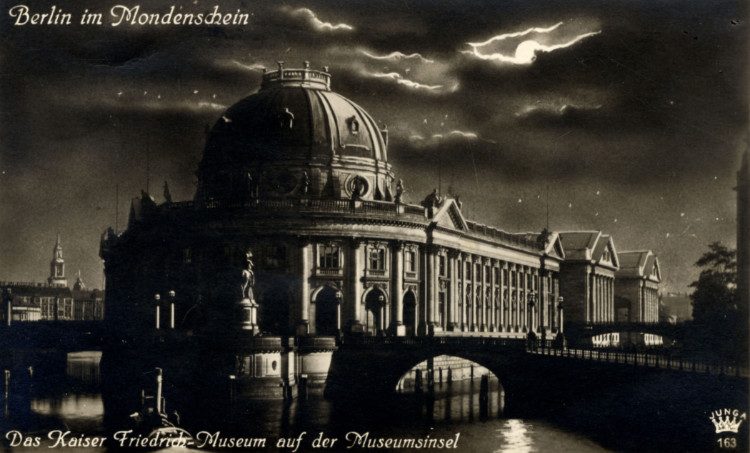
Bode-Museum: Histories
How does a collection become a museum? The façade of the Bode-Museum is one of Berlin’s iconic images. But while the exterior of the museum is thoroughly familiar to residents and visitors of Berlin alike, many are unaware of what’s inside, and of the history behind it.
The Bode Museum is home to sculptures, Byzantine art, painting, and coins spanning some 2,000 years of human history, however the factors that make a collection a unique and its history often remain concealed. As part of this special exhibition, which is spread across the entire building, the Bode-Museum takes a critical look in the mirror, asking how it became what it is today. This undertaking incorporates not just the fascinating history of the collection and the building — which are closely connected with the history of Berlin itself — but also the museum’s employees and visitors.
Bode-Museum: Geschichten from May 2020 is a special exhibition of the Skulpturensammlung und Museum für Byzantinische Kunst, Münzkabinett and Zentralarchiv.
The Second Glance: Women in the Bode Museum
The Second Glance is an exhibition series that looks at the collections of the Bode-Museum through the lens of contemporary social issues. Following thematic paths, visitors are encouraged to discover the treasures of the Skulpturensammlung and the Museum für Byzantinische Kunst in new and different ways.
Following on from All Forms of Love, the second installment in the series presents the extraordinary women of the Bode-Museum. Whether goddesses, heroines, saints, virgins, mothers, princesses or academics, their histories, personalities and social roles will be presented in their respective historical contexts, and critically discussed from a 21st-century perspective.
Der zweite Blick: Frauen is in the Bode Museum from 27 November 2020.
Special Exhibition in the Pergamon Museum
Despite large sections of the museum remaining closed for renovations, the Pergamon Museum remains the most-popular museum on Museum Island — make time-slot reservations (free) both for the main museum and the Panorama with a temporary exhibition of parts of the Pergamon Altar.
Contemporary Interventions in the Museum für Islamische Kunst (WT)
Historical collections such as that of the Museum für Islamische Kunst transport cultural heritage whose relevance for contemporary culture can never be exhausted. This becomes particularly evident when contemporary works are set alongside the historical objects.
Through subtle interventions using works of contemporary art, the significance this cultural heritage has for contemporary artists will be unveiled. For example, writing and calligraphy continues to unleash creative energies, as in the paintings of Mounir al-Shaarani, who creates calligraphies that seem to be historical but are completely contemporary.
Zeitgenössische Interventionen im Museum für Islamische Kunst — 30 October 2020 – 24 January 2021 in the Pergamon Museum.
Specialist Exhibitions on Berlin’s Museum Island 2020
Two further special temporary exhibitions in 2020 on Museum Island in Berlin are of a more specialist nature:
Photographic Memories from Nubia in the Neues Museum
Nubia – a lost cultural landscape, the Orient, and a scientific expedition at the turn of the century. In March and April of 1900, the Egyptologists Georg Steindorff, Ludwig Borchardt and Heinrich Schäfer set off together with the classical archaeologist Hermann Thiersch and diplomat Curt von Grünau on a journey into the region between the First and Second Cataracts of the Nile. One of their objectives was to visit the sites of the Pharaoh’s border forts of the Middle Kingdom.
The photographic documentation of this trip to Nubia had long been considered lost. But in 2015, during the inspection and cataloguing of the photographic archives of the Ägyptisches Museum, an unlabelled folder was uncovered containing some 340 photos, which after in-depth research were able to be identified as stemming from the Nubia trip, and are now being presented to the public for the first time in this exhibition.
Momentaufnahmen. Nubien um 1900 — 6 March – 30 August 2020 in the Neues Museum
Belgian Symbolism in the Alte Nationalgalerie
Death Drive and Decadence. Belgian Symbolism between 1880 and 1910 is a special exhibition of the Nationalgalerie – Staatliche Museen zu Berlin in cooperation with the Musées Royaux des Beaux-Arts de Belgique.
The seductive glimpse into the abyss, the exaggerated aestheticism of a society defined by overabundance but which also felt it was in the midst of a crisis, the morbid attraction between Thanatos and Eros – these are some of the themes that found expression in the art of the 19th century, especially in Belgian Symbolism. As a counter to the development of the superficial attraction of Naturalism and Impressionism, in the 1880s, a new tendency in art began to form that was marked by its sensuousness, its profound depth of meaning, and its irrationality.
The defining characteristic of Belgian Symbolism is a predilection for morbid and decadent motifs. This major exhibition presents a broad spectrum of Belgian artists who have previously received little attention, such as Fernand Khnopff, Léon Spilliaert, Félicien Rops, James Ensor and Jean Delville. Works by Gustave Moreau, Arnold Böcklin, Edvard Munch and Gustav Klimt form the reference points for Belgium as a hub of European Symbolism.
Todessehnsucht und Dekadenz. Der belgische Symbolismus — 15 May – 13 September 2020 in the Alta Nationalgalerie
More on the Berlin State Museums (Staatliche Museen zu Berlin):
Note new opening times for many Berlin museums in 2025 — several are now closed on both Monday and Tuesday.
Timeslot reservations are sensible (and sometimes needed in busy periods) for the Alte Nationalgalerie, Gemäldegalerie, Neue Nationalgalerie, Neues Museum, and Pergamon – Das Panorama. (The Pergamon Museum itself is closed until 2027!). Timeslots are released only a few weeks in advance. Online tickets are available from GetYourGuide or SMB.
Many passes and multi-museum tickets offer savings (Kulturforum / Museums Island). Individual museum ticket prices range from €8 to €14 (€20 for special exhibitions). Online tickets are skip-the-line — go directly to the gallery entrance to scan the code.
For more general information on the Berlin State Museums:
- Top National Museums and Galleries in Berlin (brief overview)
- Berlin State Museums: What Is Seen Where? (a short description of the collections in the different museums)
- Opening Hours of Berlin State Museums (2025) — major changes since mid-April 2024!
- Ticket Prices for Berlin State Museums (prices for museums, temporary exhibitions, combination tickets, online time-slot reservations). Buying online from GetYourGuide is easy. A ticket with a QR or bar code is scanned directly at the entrance — no need to pass by the ticket desk (but pick up the free audio guide before entering).
- Save with the Berlin Museum Pass – 30 museums (including all the SMB museums) in three days for €32 – a fantastic savings deal.
- Staatliche Museen zu Berlin (official website in German & English).
News & Temporary Exhibitions in Berlin in 2025:
- 2025: Top Special Art Exhibitions in Berlin in 2025 & Top Contemporary Art Exhibitions in the Hamburg Bahnhof.
- Museums closed in 2025: The Pergamon Museum is closed until 2027 (some sculptures are on display in Das Panorama), the Museum Berggruen is closed until 2026 (much of its collection is traveling the world), the permanent collection of the German History Museum (Zeughaus) is closed but temporary exhibitions continue in the Pei Building.
More Museum Reviews and Museum-Specific Information:
- Alte Nationalgalerie — 19th-century art.
- Altes Museum — Greek, Etruscan, and Roman art.
- Bode Museum — sculptures from the Middle Ages, Gothic, Renaissance, Baroque, and Classical periods, Byzantine Art, and coins.
- Ethnological and Asian Art Museums in the Humboldtforum.
- Friedrichswerdersche Kirche (free admission) with a collection of 19th-century German sculptures.
- Gemäldegalerie — German and Dutch Old Masters and Italian paintings.
- Kunstgewerbemuseum (Decorative Arts).
- Musical Instruments Museum near the Berliner Philharmonie.
- Neue Nationalgalerie — 20th-century art.
- Neues Museum — Pre and Early History, Egyptian Collection with bust of Nefertiti.
- Pergamon Museum with Ishtar Gate — the whole Pergamonmuseum is closed from 2023 until 2027. Some Greek sculptures are shown in the
- Pergamon Museum Panorama Exhibition with Asisi panoramic painting and Greek statues.
- Photography — Helmut Newton collection and historic photos.
Previous Temporary Exhibitions in Berlin Museums:
- 2024: Overview of Top Berlin Exhibitions in 2024, Caspar David Friedrich in the Alte Nationalgalerie, Frans Hals in the Gemäldegalerie, Neue Nationalgalerie (20th-century art) Hamburger Bahnhof Contemporary Art, Kupferstichkabinett (Prints and Drawings), and Photography Museum.
- 2023: Top Special Temporary Exhibitions in 2023 — overview, in the Kulturforum, in the Neue Nationalgalerie, on Museum Island, and the Museum of Photography.
- 2022: Top Special Temporary Exhibitions in 2022 — overview, in the Kulturforum (David Hockney), in the Neue Nationalgalerie, on Museumsinsel, Hamburger Bahnhof contemporary art, and the Museum of Photography.
- 2021: Top Special Temporary Exhibitions in 2021 — including the reopening of the Neue Nationalgalerie, as well as the Ethnological and Asian Art Museums in the Humboldt Forum.
- 2020: Highlights, in Kulturforum, on Museum Island, in the Hamburger Bahnhof, smaller museums, and the opening of the Humboldt Forum.
